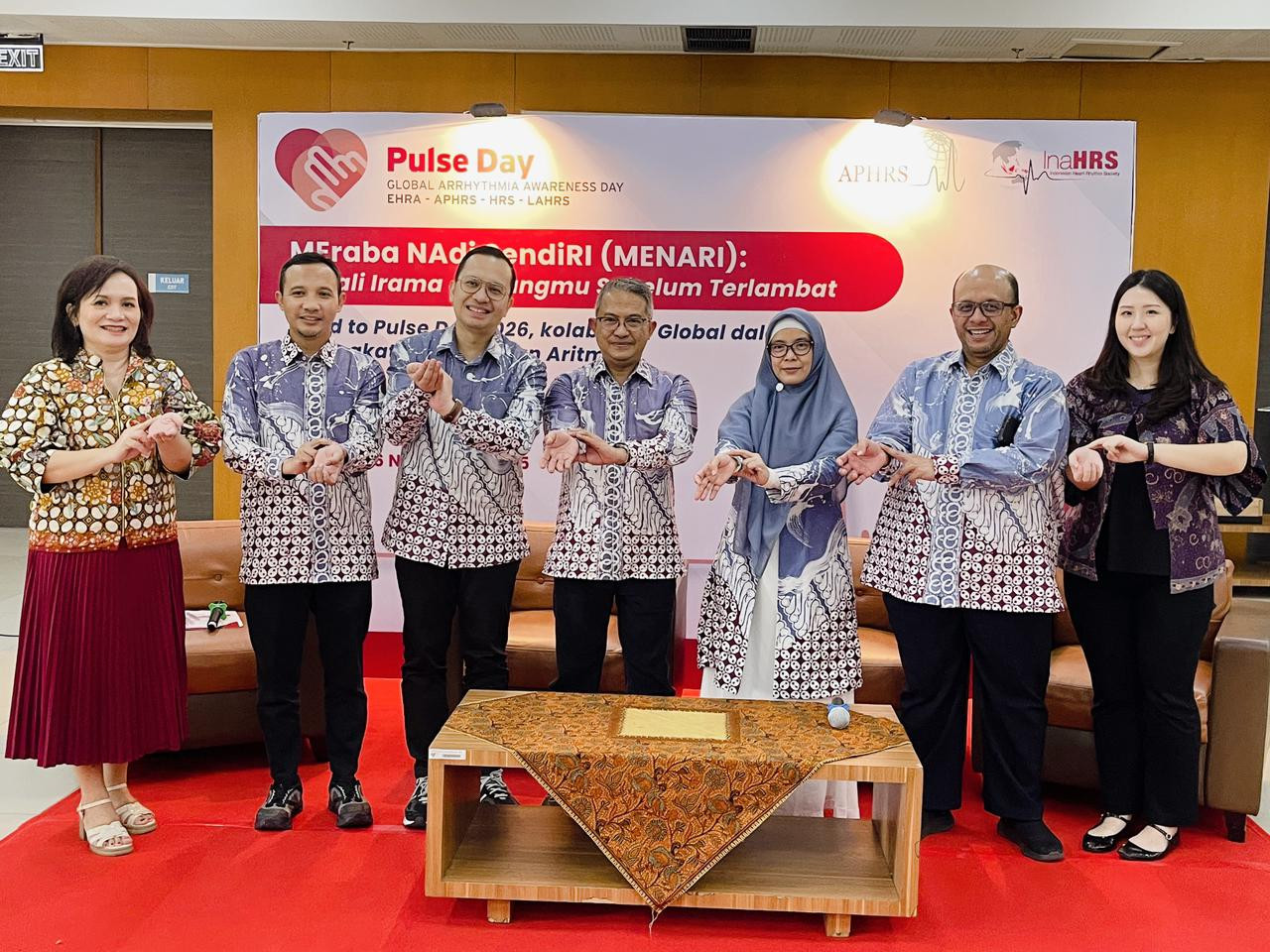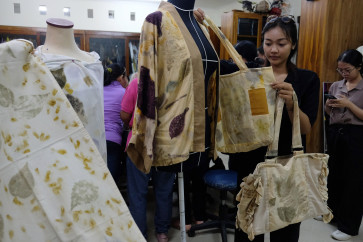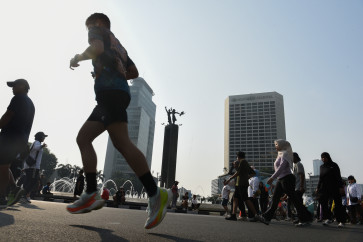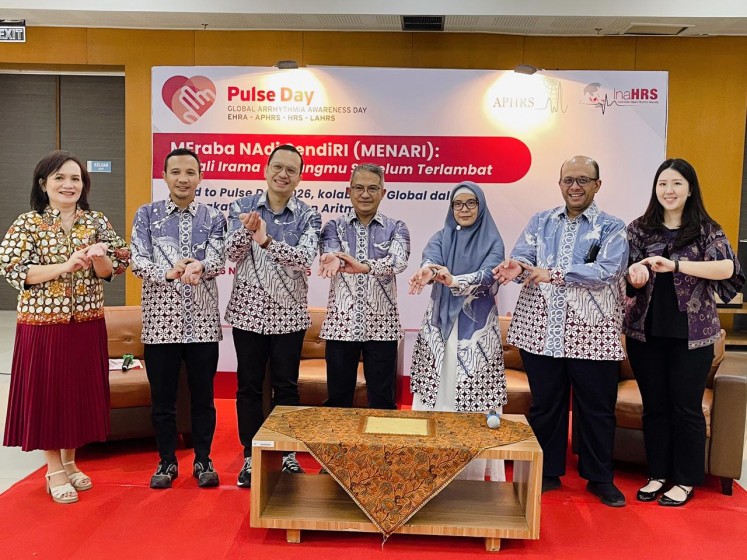Popular Reads
Top Results
Can't find what you're looking for?
View all search resultsPopular Reads
Top Results
Can't find what you're looking for?
View all search resultsSense your own pulse to save your heart: Cardiologists
Dubbed the Sense Your Own Pulse (Menari) campaing, early detection is conducted by placing one’s index and middle fingers on one’s wrist or neck to count the pulse.
Change text size
Gift Premium Articles
to Anyone
 Indonesian cardiologists show how to sense one's heart pulse during a press conference on Nov. 6 in Jakarta. Dubbed the Sense Your Owen Pulse (Menari) campaign, the early detection is conducted by placing one’s index and middle fingers on one’s wrist or neck to measure one’s pulse as an early detection against arrythmia. (Courtesy of InaHRS/-)
Indonesian cardiologists show how to sense one's heart pulse during a press conference on Nov. 6 in Jakarta. Dubbed the Sense Your Owen Pulse (Menari) campaign, the early detection is conducted by placing one’s index and middle fingers on one’s wrist or neck to measure one’s pulse as an early detection against arrythmia. (Courtesy of InaHRS/-)
I
ndonesian cardiologists launched a campaign on Thursday to sense one’s own pulse as part of a global movement ahead of the 2026 Pulse Day and a campaign to promote public awareness of early arrhythmia detection.
Dubbed the Sense Your Owen Pulse (Menari) campaing, the early detection is conducted by placing one’s index and middle fingers on one’s wrist or neck to count the pulse.
“Count the pulses for 30 seconds and multiply it by 2 to get the pulse per minute,” Dicky Armein Hanafy, head of Pulse Day Task Force and public affairs chairman of the Asia Pacific Hearth Rhythm Society (APHRS), said in a media statement.
“Norma pulse rates usually range from 60 to 100 pulses per minute.”
Dicky was speaking at a press conference introducing Menari and the Road to 2026 Pulse Day in a global collaboration to raise awareness about arrhythmia on Thursday.
Pulse Day is commemorated on March 1 as stark reminder that one out of three people are at risk of suffering from serious arrhythmia.
Pulse Day is also a global awareness initiative to increase understanding about cardiac arrhythmia so that people take simple steps but are impactful in protecting their hearts, such as knowing their heart beats, checking their pulses routinely and immediately consulting [with medical workers] if there are anomalies.
Another speaker, Agung Fabian Chandranegara, secretary general of the Indonesian Heart Rhytm Society InaHRS, highlighted sudden cardiac death (SCD) as a serious cardiovascular problem.
“SCD contributes about 10 to 15 percent of global death every year,” he told the press conference.
“This means millions of lifes have been lost suddenly due to undetected problems in heartbeat.”
Agung also said that SCD cases were estimated to reach 40 to 100 cases per 100,000 people per year and that men had a higher mortality rate of 5.23 when compared to the women’s mortality rate of 2.71.
He said that prevention and early detection were the most effective steps, suggesting the public understand personal risk factors and conduct routine health checks.
Another important thing is knowing how to perform cardiopulmonary resuscitation (CPR).
“CPR training has been proven to increase chances of life up to five times,” Agung said.
In addition to the importance of early detection and treatment for heartbeat disturbances, discussion of arrhythmia must be treated more strategically by the national health system.
This can be done through the Arrythmia National Blueprint as a strategic guide to strengthening health services for arrythmia, which entails increasing human resources capacity and health facilities and integrated detection technology and arrhythmia governance at all levels of society.
InaHRS chairwoman Erika Maharani said that the blueprint was designed as a strategic guide to strengthen arrythmia early detection and governance by transforming six pillars: primary service, referral service, health resilience, health financing, health human resource and medical technology.
“These transformations are meant to achieve arrythmia services that are more even, easily accessible and supported by competent medical practitioners and technology all over the country,” she said. (nvn)










